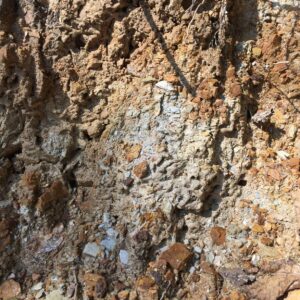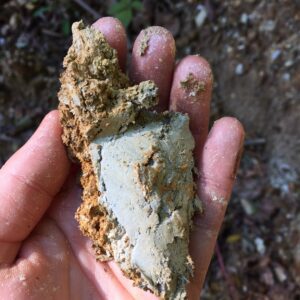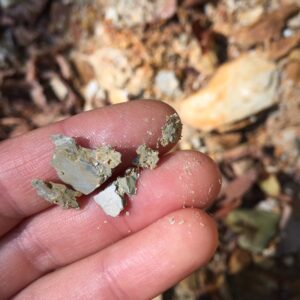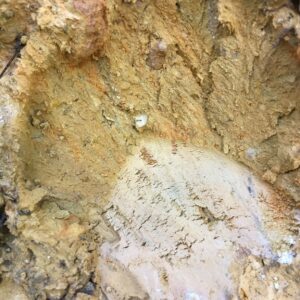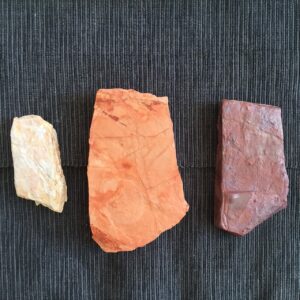Mica and shale
Knowing rocks means knowing clay.
I have been on a walk recently at Rožnik hill. Rožnik is a hill with forest stretching on west part of Ljubljana. Many people from the city go there to walk, exercise or just be a little more in the nature. It is a very interesting hill. I have started researching it this spring. I recently moved in the area, and slowly began understanding the place around me, especially from a geological point of view. So far I have found some beautifully orange and yellow coloured clay, just where the path cuts the forest. It is full of iron, but also full of silica sand. But there is another clay I recently found. It’s very different, so I did a little further research on it. It is found between shale slates and contains mica.
Shale is very easy to identify. It looks like it is in flakes and it breaks easily. On Rožnik it is grey colour, but some orange brown lines are in between which indicates iron. Somewhere Shale is very light grey colour. Almost like it is silver. It also has that silver shine. And that is due to mica. Mica is a silicate mineral of aluminium and potassium. Shale comes from clay and mud with sedimentary process. I see shale as a clay being slowly turned back to rock. Additional metamorphic step would turned shale to schist. Shale also has some quartz and calcite in it. So I tried firing shale. It goes very dark red – like many clays I collected in Slovenia.
How do I know it is mica shale? One, the rock breaks easily in plains, and two, it has a shiny small particles in it – mica. You can see shale being flaky and in layer, and you cat easily pick and break a piece off the cluster.
You san see how geology plains run in the area, and in micro locations as well. Some spots have shale broken into even smaller particles, in a way reverse sedimentary process, where shale wants to become clay again. Or only slowly becoming- I do not know, because I am not a geologist, I can only conclude from what I see. So this is the material I collect as clay. It is very bright, light grey, shiny and flaky material, and in some places gold, because iron came in the mix as well. I have collected some. Up to now I have fired shale at low and hight temperatures. It comes orange and dark red – like many other clays. I also fired a small piece of this shale clay at low temperature – 900°C and at that T colour is very white.
So now, let’s wait for the shale clay to soak well in water, then I’ll process it and test it further.
